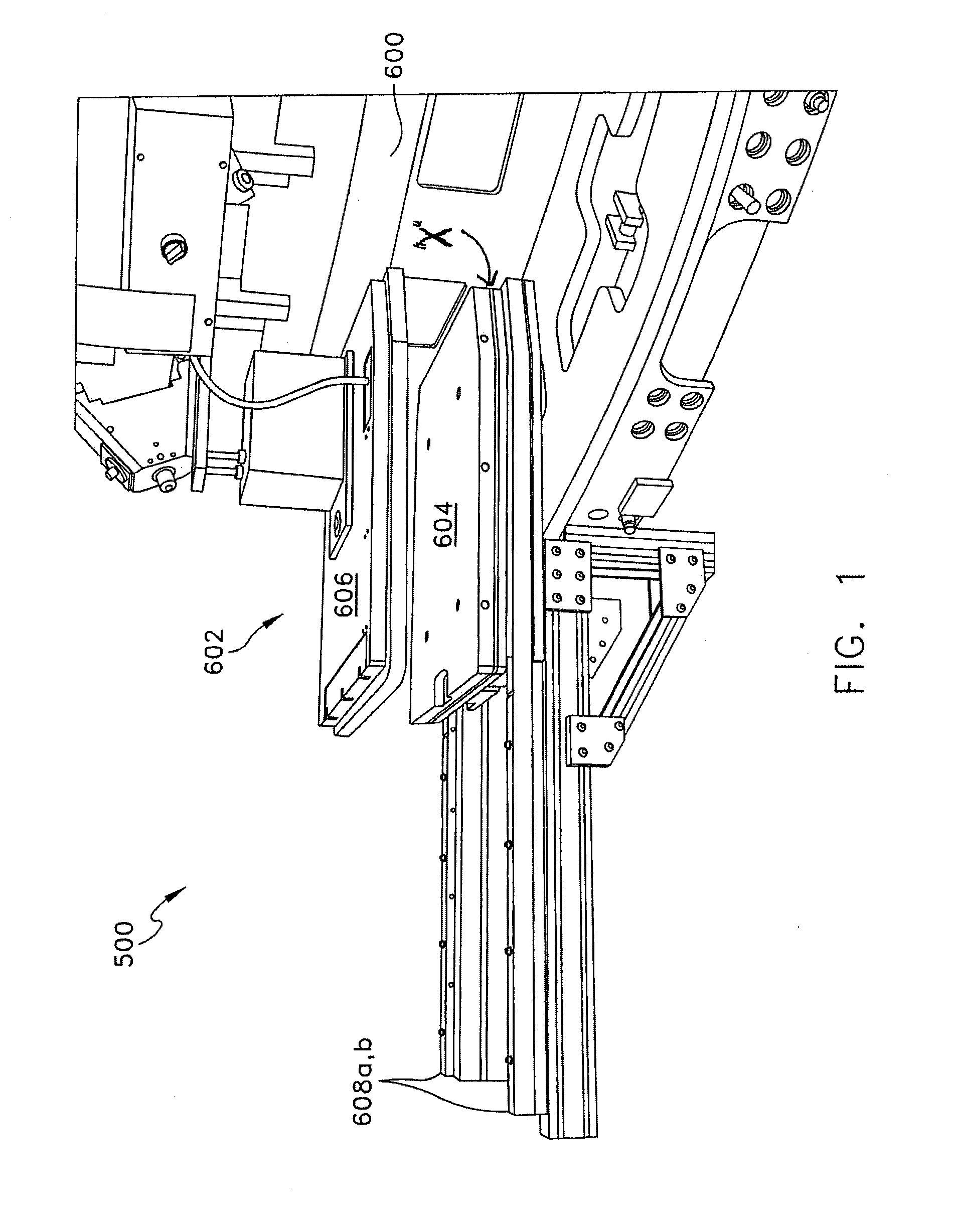Molding system, method and articles formed thereby
a molding system and molding material technology, applied in the field of molding materials and articles formed thereby, can solve the problems of difficulty in adjusting the shape of the cushioning material to the shape of the obj
- Summary
- Abstract
- Description
- Claims
- Application Information
AI Technical Summary
Benefits of technology
Problems solved by technology
Method used
Image
Examples
working examples
Example 1
[0079]Formation of an innersole. A metal mold defining thirty six (36) heel liners was selected for use in the Desma machine. The mold comprised a recessed region of about 0.020″, and a gasket spaced apart both from the perimeter of the mold edge and from the recessed region. The dimensions of each of the 36 mold units were about 4 inches by about ½ inch, and the depth of the mold units was uniform. A TPU sheet having a thickness of 0.004″ (Deerfield Urethane PS3110) was installed on a press, and stretched across the top of the mold. The TPU sheet was heated under a heater at 430° F. for 14 seconds, and then a gel precursor was dispensed onto the TPU sheet. A barrier layer was then placed over the top of the gel precursor.
[0080]The mold cover closing cycle was initiated, which applied pressure to the gel precursor, so that it began to spread laterally in the mold. When the gel precursor reached the edge of the mold, a vacuum was applied to the underside of the TPU sheet, to...
example 2
[0082]Formation of a gel seat pad. A metal mold defining a single seat pad was selected for use in the Desma machine. The seat pad was 16″ long, 13″ wide by ¼″ thick, and comprising about 190 pods. After installation on a press a sheet of 0.004″ thick TPU, such as Deerfield Urethane PS3110, the TPU film was stretched across the top of the mold, and heated under a heater at 430° F. for 14 seconds. A gel precursor was then dispensed onto the TPU sheet. A stabilization layer was then placed over the top of the gel precursor.
[0083]The mold cover closing cycle was initiated, which applied pressure to the gel precursor, so that it began to spread laterally in the mold. When the gel precursor reached the edge of the mold, a vacuum was applied to the underside of the TPU sheet, to draw it into the mold cavities, which was initiated about six (6) second after the mold closing cycle was initiated. The complete mold cover closing cycle was about ten (10) seconds. Thereafter, the part was allow...
example 3
[0084]Formation of a Frothed Foam Elbow Pads. A metal mold defining a 4 elbow pads was selected for use in a Desma rotary molding machine, and bolted to the support plates at each molding station. Each elbow pad was 8.5″ long, 6″ wide by 0.25″ thick, and comprising about 11 pods. After the mold bases were installed, a sheet of 0.004″ thick TPU, such as Deerfield Urethane PS3110, was stretched across the top of the mold base at the first station, and heated to about 205° F.
[0085]In the material mixing and dispensing system, the components of a polyurethane foam (Poron XRD, available from Rogers Corporation) were circulated in subsystems A and B, and thereafter, valves M and N were opened, allowing the polyol and isocyanate to flow into mixing chamber 730, along with compressed nitrogen from the source of compressed gas. The material components were mechanically mixed together and with the compressed nitrogen to form cellular, frothed foam material formulation with a density in the ra...
PUM
| Property | Measurement | Unit |
|---|---|---|
| thicknesses | aaaaa | aaaaa |
| pressure | aaaaa | aaaaa |
| elongation | aaaaa | aaaaa |
Abstract
Description
Claims
Application Information
 Login to View More
Login to View More - R&D
- Intellectual Property
- Life Sciences
- Materials
- Tech Scout
- Unparalleled Data Quality
- Higher Quality Content
- 60% Fewer Hallucinations
Browse by: Latest US Patents, China's latest patents, Technical Efficacy Thesaurus, Application Domain, Technology Topic, Popular Technical Reports.
© 2025 PatSnap. All rights reserved.Legal|Privacy policy|Modern Slavery Act Transparency Statement|Sitemap|About US| Contact US: help@patsnap.com



